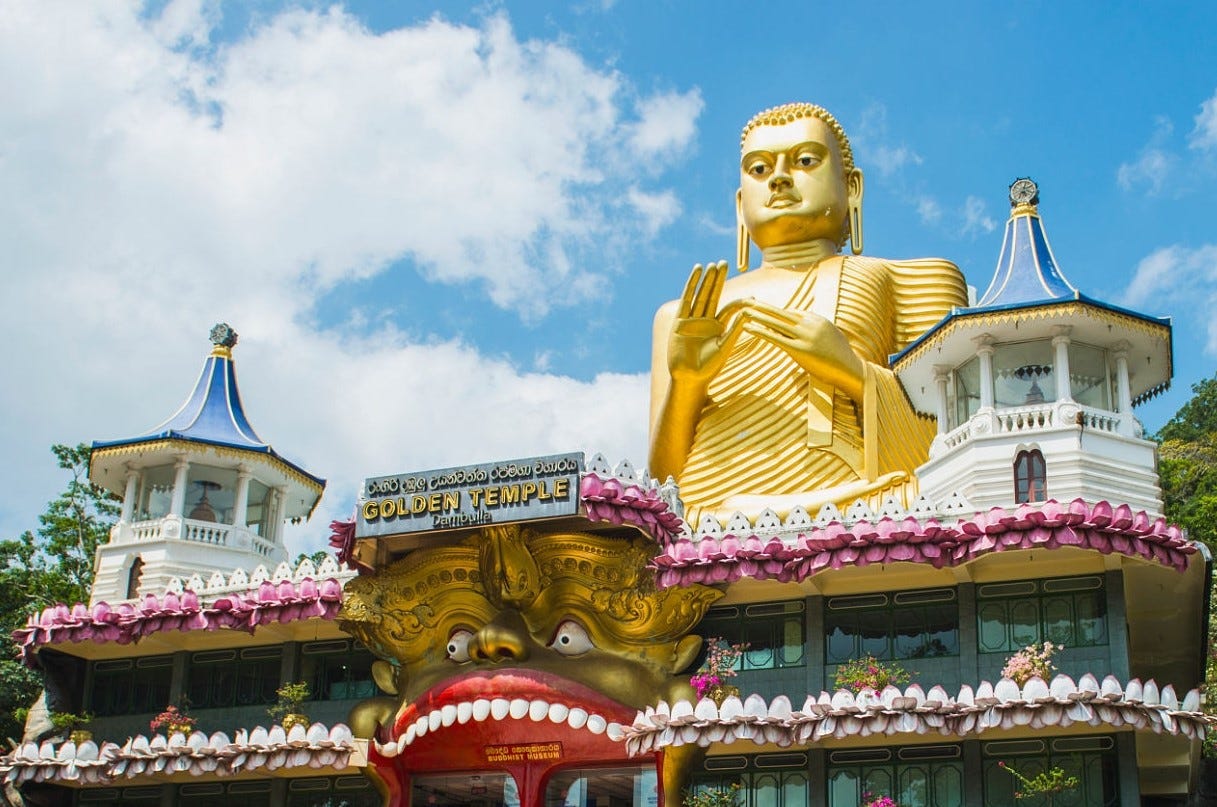Located in the ancient capital of Sinhalese kings, Anuradhapura, Dambulla Cave Temple Sri Lanka has been listed as a World Heritage Site Sri Lanka by UNESCO, owing to its rich Buddhist heritage. Since the 3rd century BC, this cave complex has been inhabited by Buddhist monks. As a result, it has evolved over time into one of the most outstanding religious structures in South Asia. The walls of the Dambulla Cave Temple have been adorned with colourful and well-preserved murals depicting Lord Buddha, his disciples, royalty, and deities. In addition, distinctively coloured 153 Buddha statues, statues of 3 Sri Lankan kings and four statues of deities can be seen within the caves. These statues and murals offer fascinating insights into the development of traditional Sri Lankan art and the influence of Hindu culture on it.

The five major caves that create the Dambulla Cave Temple, are located under an overhanging rock, consisting of deliberately carved drip lines that prevent the rains and stormwater runoff from entering the caves. The first one of these caves is termed as “Devaraja lena” which roughly translates into “Cave of the divine king”. At the entrance to the cave, an inscription made of Brahmi letters indicates the establishment of the temple complex in 1st century BC, during the reign of King Valagamba. The second cave, which is the largest of the five caves at Dambulla Cave Temple, is named “Maharaja Vihara Lena” which means “Cave of the Great Kings’ Temple”. This cave measures approximately 52 m across and 23 meters from the entrance to back, with its roof reaching 7 m above the ground. The interior of the cave temple is decorated with murals and an astounding total of 56 Buddha statues.
The cave also houses statues of god Vishnu, who is said to have created the caves, and the local deity Saman, who is among the major guardian gods of the island and Buddhism. The statues of King Valagamba and Nishshankamalla can also be observed inside the cave. According to historical legend, when King fled his kingdom due to South Indian invasions, monks from the Dambulla Cave Temple assisted King Valagamba. To honour the deed, the King developed the cave complex into a splendid monastery upon reclaiming his reign.
The Dambulla Cave Temple several Buddha sculptures was embellished and gilded by King Nissankamalla, who had South Indian origins and the cave interiors were also in gold, earning it the name “Rangiri Dambulu Viharaya” which translates to English as “The golden temple of Dambulla”. “Maha Aluth Vihara” or “The great New Temple” is the third major cave of the Dambulla Cave Temple, which consists of Kandyan style murals and 50 Buddha statues. In addition, a statue of King Kirthi Sri Rajasinghe, who commissioned the paintings during the 16th century can be seen here.
Even though the other caves are smaller in comparison to the major 3, they are still outstanding in their splendour. Due to its immense religious and cultural value, several conservation and renovation projects have been conducted to preserve this heritage site of Dambulla Cave Temple for future generations. So, if you are planning a visit to the central region of Sri Lanka, Dambulla Cave Temple should definitely be included in your list of destinations; you would not want to miss this cultural gem, respected and cherished by Sri Lankan Buddhists.
Best time to visit — Visit any time of the year
Distance from Colombo — 156 km
How to get there — Around 4 hours in a private vehicle from Colombo
The author has written about Dambulla Cave Temple located in Sri Lanka.
Post new comment
Please Register or Login to post new comment.